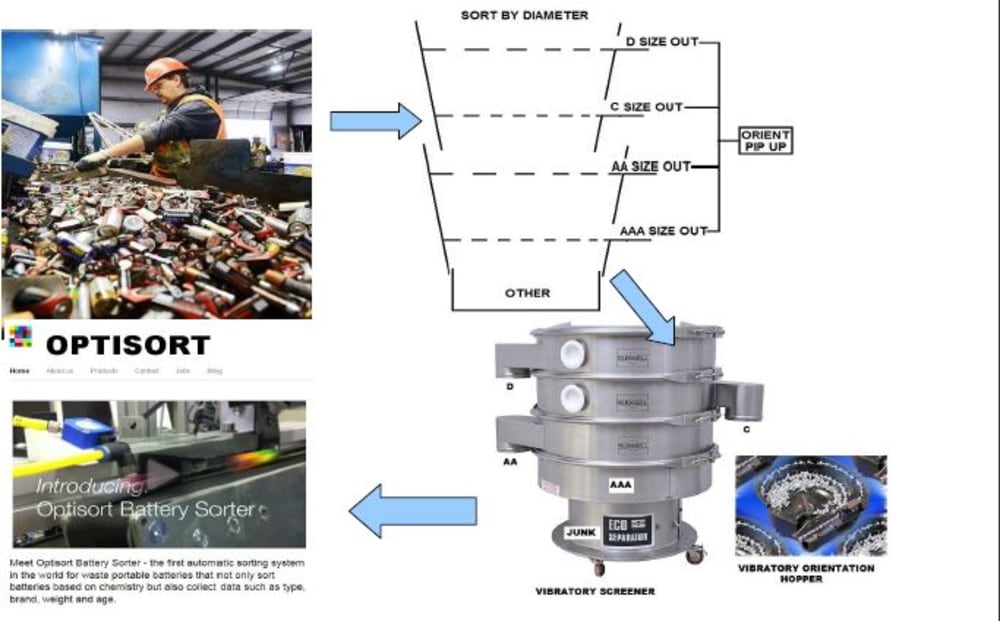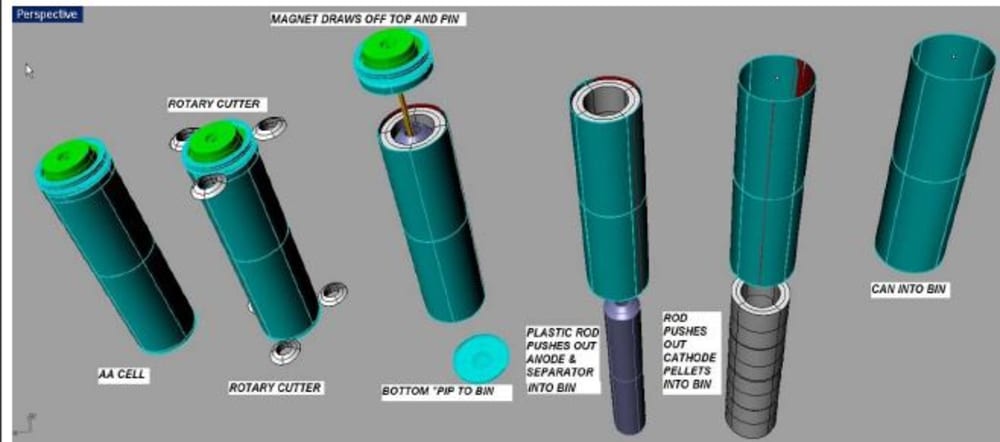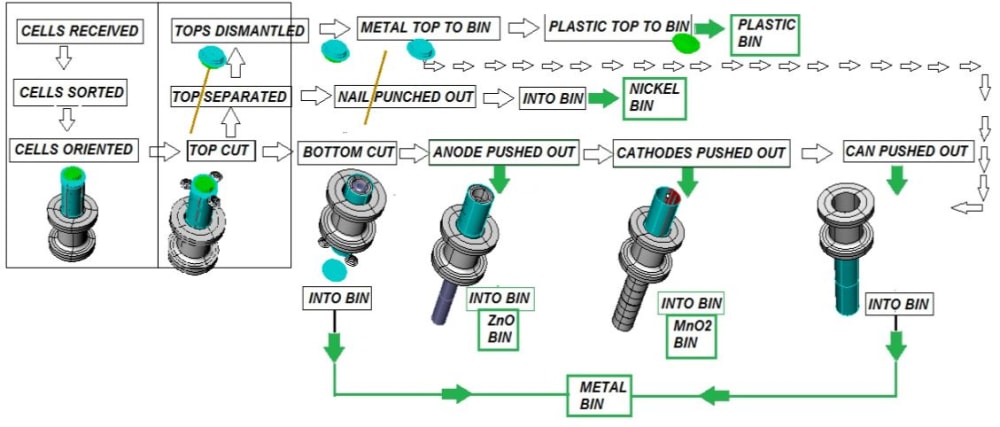The increase in battery and cell manufacture in world wide markets will see an urgent need to find ways to recycle more battery products, salvaging the components in order to get them back into the manufacturing supply chain as a sustainable recycling process.
It is proposed to provide machinery to dismantle (in the first instance), cylindrical disposable batteries such as AAA, AA, C and D cells.
7 years at Duracell (Canada) in Product Design/ Quality Engineering and as designated Trouble Shooter when things went wrong gave a deep insight how these batteries were put together from raw material all the way to functional testing. When you know how they're put together, it's not difficult to figure out how to take them apart...a common requirement when trouble shooting.
Existing production machinery can be adapted to take them apart at a much higher rate than putting them together, thus, the sustainability factor is greatly enhanced where the aspect of recycling is concerned.
This write up is based around Duracell's products since familiarity exists with them, but, other brands can just as readily be dismantled since the basic logic of the proposal applies to all types of cylindrical cells, with detail exceptions which do not interfere with the efficiency of the system.
Cells are first sorted by diameter using vibratory screens arranged to segregate the different sizes into separate bins. As recycling trucks make the rounds collecting scrap batteries vibratory screens within the trucks do the segregation by size. At the recycling centre sized batteries are unloaded from the truck onto a Machine Vision conveyor which further segregates them into chemistry types. Batteries arriving at the recycling centre which have not been segregated go through the process outlined in the sidebar graphic to be sorted by size. Then the sorted batteries go to a machine vision station to be sorted by type into segregated bins.
The machine readable part numbers of the cells identify what they are and Optisort is an example of a machine which could do the job.
Cells are tracked into indexers where a rotary cutter similar to a moving pipe cutter cuts the tops and bottoms off the cells. Magnets draw off these parts and the bottom part drops off into a metal collecting bin. The top part is conveyed to another station to separate its component parts into respective collecting bins for metal, nickel, and plastic.
What is left is indexed to another station where the anode and separator is pushed out into another collection bin; the next indexed position pushes out the cathode pellets into a collection bin, and where there is a hang up because of swollen pellets the can and pellets drops through to a cutting station which slices the can lengthwise and the two halves fall into a metal collecting bin, while the cathode pellets drop into the cathode collecting bin.
The sidebars briefly outline the process and there are finer details on file which can be accessed by any interested party.
Like this entry?
-
About the Entrant
- Name:John Mitchell
- Type of entry:individual
- Software used for this entry:RhinoCad and Open Office Impress
- Patent status:none








